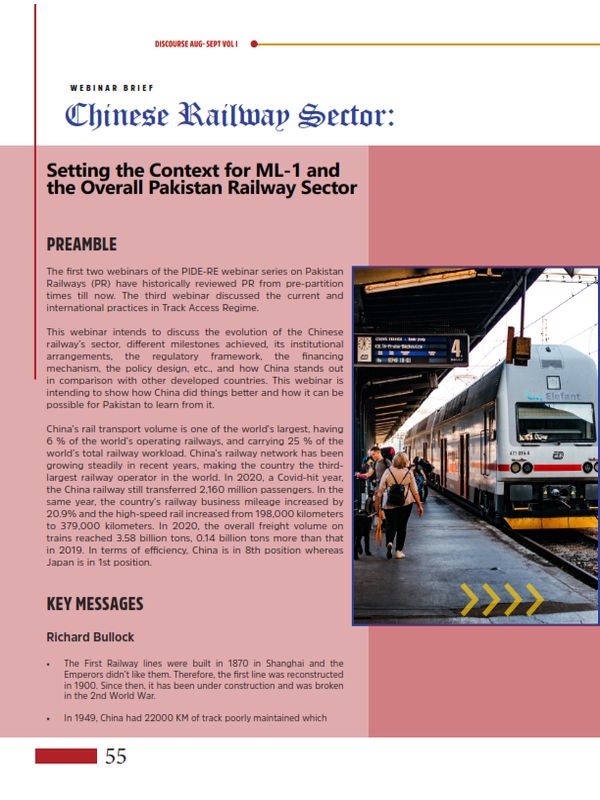
Pakistan Institute of Development Economics
- Home
Our Portals
MenuMenuMenuMenuMenuMenuMenu - ResearchMenuMenuMenuMenuMenuMenuMenu
- Discourse
- The PDR
- Our Researchers
- Academics
- Degree Verification
- Thesis Portal
- Our Portals
Chinese Railway Sector: Setting The Context For ML-1 And The Overall Pakistan Railway Sector (Webinar Brief)
PREAMBLE
The first two webinars of the PIDE-RE webinar series on Pakistan Railways (PR) have historically reviewed PR from pre-partition times till now. The third webinar discussed the current and international practices in Track Access Regime.
This webinar intends to discuss the evolution of the Chinese railway’s sector, different milestones achieved, its institutional arrangements, the regulatory framework, the financing mechanism, the policy design, etc., and how China stands out in comparison with other developed countries. This webinar is intending to show how China did things better and how it can be possible for Pakistan to learn from it.
China’s rail transport volume is one of the world’s largest, having 6 % of the world’s operating railways, and carrying 25 % of the world’s total railway workload. China’s railway network has been growing steadily in recent years, making the country the thirdlargest railway operator in the world. In 2020, a Covid-hit year, the China railway still transferred 2,160 million passengers. In the same year, the country’s railway business mileage increased by 20.9% and the high-speed rail increased from 198,000 kilometers to 379,000 kilometers. In 2020, the overall freight volume on trains reached 3.58 billion tons, 0.14 billion tons more than that in 2019. In terms of efficiency, China is in 8th position whereas Japan is in 1st position.



